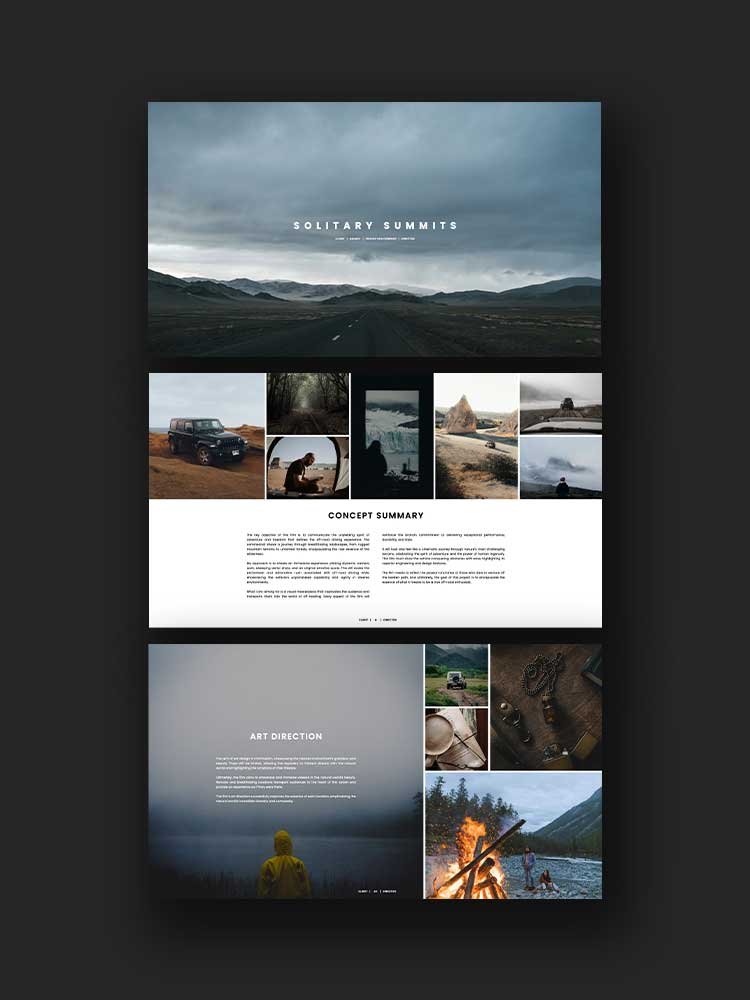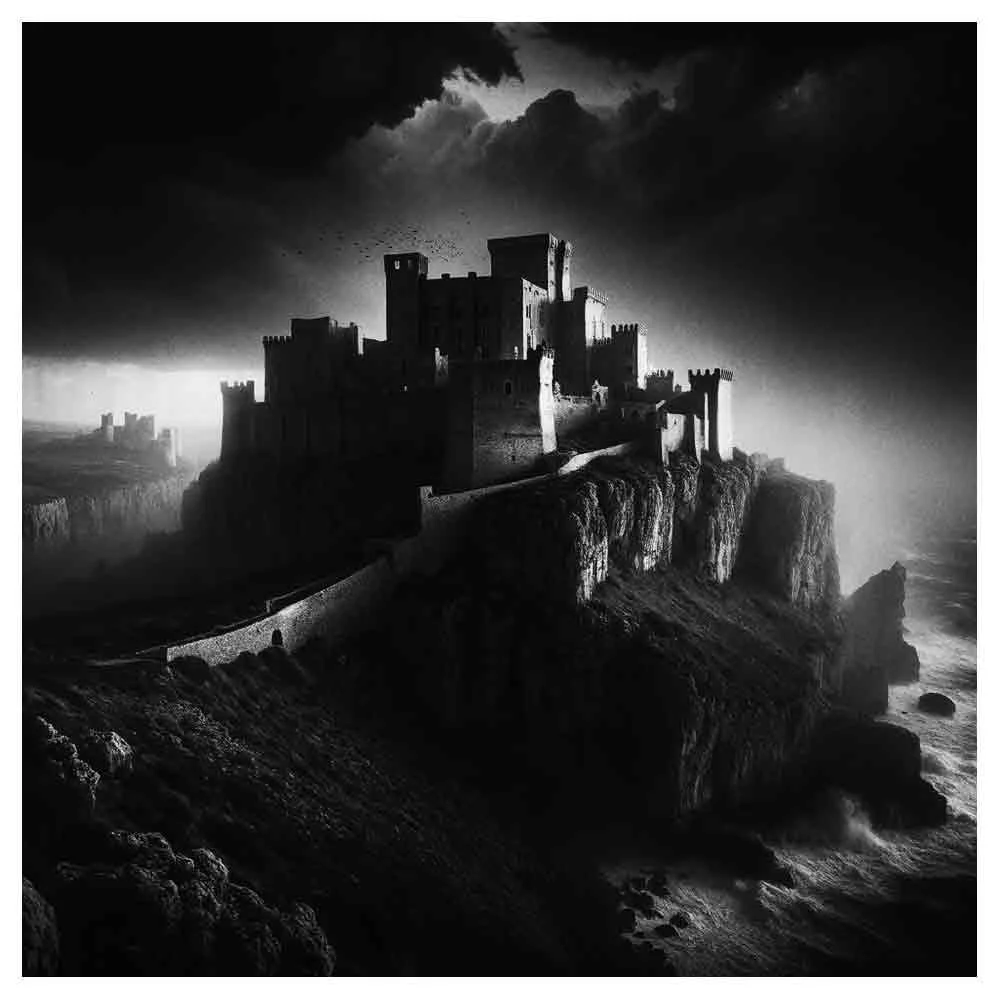How To Craft an Engaging Documentary Pitch Deck
Many filmmakers underestimate the power of a compelling pitch in producing successful documentary films. Creating an engaging documentary pitch deck is essential whether you are a seasoned veteran or just beginning your filmmaking journey.
What is a Documentary Pitch Deck?
Simply put, a documentary pitch deck is a visual presentation that serves as a roadmap for pitching your film. It should encapsulate the vision, style, narrative arc, and key details of your documentary idea in an engaging, convincing, and easily understood way.
Consider it a visual aid - a tool to communicate your cinematic vision to potential investors, production companies, film festivals, and anyone who can help bring your project to life. A good pitch deck is more than just a written document - it is a visual aid that tells a compelling story.
Key Elements of a Documentary Pitch Deck
Creating pitch decks requires a strategic approach. Here are the crucial elements to focus on when creating pitch decks below:
Front Cover: The front cover is your first impression. Make it bold. Make it count. Include your documentary title, logline (a one-sentence summary of your film's narrative), and some compelling visuals.
Log Line: Your logline is the one sentence that encapsulates your film. This should provide a clear understanding of your documentary idea.
Film Synopsis: Give a brief overview of your film's narrative arc. This should explore your documentary's premise, characters, and style inspiration more in-depth.
Detailed Synopsis: A detailed synopsis provides a thorough walk-through of your film, diving into important details and offering a fuller picture of your story.
Mood Board: A mood board showcases the visual style of your film. It can include style inspiration from similar documentaries, photographs, colors, fonts, and anything else that communicates the mood and tone of your film.
Production Team: Introduce your production team, highlighting their experience and expertise. This can help build credibility and assure investors of a successful production.
Target Audience: Define your audience demographics and target genre. Use data to demonstrate a clear market for your documentary.
Marketing Strategy and Distribution Plan: Outline how you plan to promote your film and get it in front of audiences. Include potential film festivals for festival screenings, your plans for securing a distribution deal, and your online promotion strategies.
Financial Projections: Show potential investors where their money will be going. Include a detailed budget, sales projections, and a financial plan.
Remember, your documentary pitch deck should be visually compelling, clear, and concise. It's about telling your story in a way that engages your reader and builds interest in your project.
Tips for a Successful Documentary Pitch
Know Your Story: The most compelling documentaries start with a compelling story. Whether it's a character-driven piece or a deep dive into an event or idea, knowing your story inside and out is the first step to a successful documentary pitch.
Understand Your Audience: Who will be watching your documentary? What do they care about? Understanding your target audience and their interests can help you shape your documentary and pitch deck to appeal to them.
Include Archival Footage: Include examples in your pitch deck if your documentary relies heavily on archival footage. This gives potential investors a taste of the film's style and tone.
Follow-Up: Always follow up with potential investors after pitching. This keeps your project on their radar and allows you to address any additional questions they may have.
Practice Your Pitch: A strong oral presentation accompanies the best documentary pitch decks. Practice your pitch to ensure it's as engaging and compelling as your written material.
Conclusion
Creating a documentary pitch deck can feel daunting. Still, with careful planning and a focus on the story you want to tell, you can create a tool that wins over investors and serves as a valuable guide in the production process.
By focusing on these key aspects of the documentary pitch deck, you'll be well on your way to capturing the interest and funds you need to bring your documentary film to life.
Remember, your pitch deck isn't just about securing funding in the early stages of pre-production. It's about showing potential investors, partners, and audiences what makes your documentary unique.
With a clear vision, a compelling narrative, and a passion for your subject matter, you'll create a pitch deck that stands out and helps you secure funding to take your documentary from a dream to the silver screen.
Frequently Asked Questions About Documentary Pitch Decks
How long should my pitch deck be?
A good pitch deck is typically between 10-20 slides long. It should be comprehensive enough to cover the details of your film yet concise enough to keep the reader engaged.
Why is a logline important in a pitch deck?
A logline is a one-sentence summary of your film. It quickly communicates your documentary's core concept and unique selling points to potential investors or production companies. A compelling logline can hook your audience from the outset.
How do I identify my target audience?
Understanding your target audience is crucial to the success of your film. You can identify your target audience by considering who would be most interested in your film's theme, story, or characters. Consider age, gender, geographical location, interests, and values.
What should be included in my marketing and distribution plan?
Your marketing and distribution plan should outline how you plan to promote your film and get it in front of audiences. This might include your strategies for social media marketing, PR, film festival submissions, securing a distribution deal, or even a theatrical release.
Why are financial projections important in a documentary pitch deck?
Financial projections are crucial to showing potential investors how their money will be used. They allow you to demonstrate to investors that you have a plan for a return on investment, which can increase the likelihood of securing funding.
How can I make my documentary pitch deck stand out?
Focus on storytelling and visual appeal. Ensure your deck is engaging, easy to understand, and visually compelling. Use high-quality images, compelling infographics, and be sure your text is concise and impactful.
Can I use my documentary pitch deck for multiple pitches?
Yes, but tailoring your pitch deck to each specific audience is important. Different investors or production companies may have different interests or priorities, so customizing your pitch deck to align with their goals can increase your chances of success.
Remember, your documentary pitch deck is essential in bringing your vision to the screen. The more effort and detail you put into it, the more likely you will secure the funding and interest you need.
How important is the design of my film pitch deck?
The design of your pitch deck is quite significant. While the content is essential, a visually appealing, well-organized deck can make your idea stand out. It should capture the mood and tone of your film, and effectively communicate your story and vision.
Should my documentary pitch deck contain a script?
While including the entire script is unnecessary, providing key excerpts or a brief outline can give potential investors a clearer picture of your documentary's narrative. However, a complete script is usually not included in the pitch deck.
How do I choose the right visuals for my documentary pitch deck?
Visuals should be representative of the tone, style, and theme of your documentary. They can include still images, mood boards, infographics, or short clips. The aim is to provide the audience a snapshot of the film's aesthetic and narrative feel.
How can I convey the uniqueness of my documentary idea in the pitch deck?
This can be achieved through the logline, synopsis, and highlighting unique aspects of your story, style, or characters. Also, the market research section can help showcase your documentary's uniqueness by illustrating its potential in the current market.
Should I include a timeline in my documentary pitch deck?
Yes, a timeline indicating key stages of pre-production, production, post-production, and distribution can help potential investors understand when they can expect returns on their investment.
What is a mood board, and why is it important in a documentary pitch deck?
A mood board is a collection of images, colors, fonts, and other visual elements that define the visual style of your film. It’s an important part of the pitch deck because it provides a tangible and immediate sense of your film’s aesthetic.
Can I include testimonials or references in my documentary pitch deck?
Yes, testimonials or references can be a great addition, particularly from respected industry figures. They can add credibility and indicate your project's level of interest and support.
Is it important to include risks and challenges in the documentary pitch deck?
While it's not standard practice, some filmmakers include examples of potential risks and challenges in their pitch decks to show they have thought about potential pitfalls and have plans to navigate them.
What happens if my documentary pitch deck is rejected?
Rejection is a part of the pitching process. It's important not to get discouraged and to use any feedback to improve your pitch deck for future pitches. Remember, it often takes many pitches before finding the right match.
How do I know if my documentary pitch deck was successful?
It can be deemed successful if your pitch deck results in funding, partnership offers, or interest from producers or production companies. However, even if it doesn't, creating the pitch deck can clarify your vision and improve your presentation skills.
How can I use my documentary pitch deck after securing funding?
Your pitch deck can continue to serve as a guide and promotional tool throughout the production and distribution of your film. It can also be used as a basis for press kits, marketing materials, and festival submissions.

































